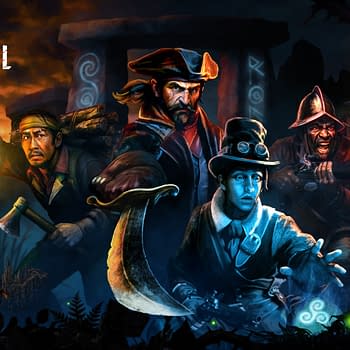Posted in: Games, Paradox Interactive, Vampire: The Masquerade - Bloodlines 2, Video Games | Tagged: the chinese room, Vampire the Masquerade
Vampire: The Masquerade – Bloodlines 2 Drops Graphical Dev Diary
Paradox Interactive has released a new developer diary for Vampire: The Masquerade – Bloodlines 2, going over the next-gen graphics.
Article Summary
- Paradox Interactive unveils next-gen graphics for Vampire: The Masquerade – Bloodlines 2.
- New dev diary showcases Seattle's lifelike vampiric transformation using UE5.
- Upgrading from Unreal 4 to Unreal 5 posed challenges but enhanced visuals significantly.
- Lumen technology introduces realistic lighting and shadow dynamics to the game.
Paradox Interactive and developer The Chinese Room released a new developer diary for Vampire: The Masquerade – Bloodlines 2, going over the graphics for the game. The blog basically goes over everything they have been doing to make the game feel far more realistic on the next-gen consoles, as they show off a variety of images and gifs for you to look over that highlight how they've made this alternative reality of Seattle look and feel like a vampire's den. We have a snippet from the blog here for you to check out, as you can read the full thing on the game's website.

Vampire: The Masquerade – Bloodlines 2: Dev Diary #5
In the ever-evolving world of video game development, staying at the cutting edge is a continuous pursuit. With the release of Unreal Engine 5, the landscape has shifted dramatically, presenting game developers with an array of groundbreaking technologies and tools. I wanted to delve into our experiences and challenges with some of the experimental technologies that have come to define UE5: Nanite, Virtual Shadow Maps and Lumen. These technologies play a pivotal role in creating a realistic and dark world that aligns perfectly with the neo-noir art direction of [Vampire: The Masquerade – Bloodlines 2]. An important milestone in our development was the upgrade from Unreal 4 to Unreal 5. It was a big risk because normally you lock in the version of your development engine early. The changes touched every part of the game, and all our scenes, lighting and assets had to be converted. All the dev teams communicated with us brilliantly to make sure the new tools were exactly what we needed to make the game look amazing and run smoothly.
Lumen is a new real-time global illumination tech. It brings a level of realism to game lighting with raytracing to simulate the path of light and how it interacts with surfaces and materials. It can simulate indirect (bounce) lighting and reflections. However, integrating Lumen into our games was no small feat. Ensuring consistent and smooth performance was the key to achieving the atmospheric lighting required for our world. Working with dynamic lighting and shadow has always been a challenge. In performance terms it was expensive, placing lights is an art and overlapping lights exponentially increase complexity and the costs of rendering the scene because a lot of calculation must be done for each pixel hit by each light. Normally, the solution is to "pre-bake" lights. All the shadows were saved to the level before release, and you couldn't change them. This provided great quality results for a cheap cost, but the lights and shadows were… well… faked. You would then have to include other tricks like light probes to show that on objects moving inside that space.










